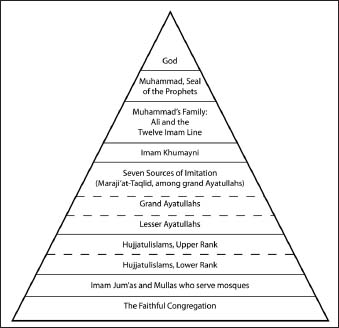IslamLeadership, Authority, and Religious Roles |
Are there religious hierarchical structures in any branch of Islam? |
Sunni Muslims constitute the vast majority of Islam’s global membership. Since the generation that succeeded Muhammad, the dominant ideal of governance has been that a leader should be first among equals. Centuries of caliphal splendor might persuade a student of history that a type of monarchy was the preferred form of Islamic governance. In practice many of the most powerful Muslim rulers over the centuries have at least tried to call the shots religiously as well as politically. Nevertheless, Sunni Islam has never evolved quite the kind of hierarchical structure found, for example, in Roman Catholicism. Muslim authority structures in various countries and regions often take the form of councils of religious or legal scholars or of imams. In practice, jurisdiction in matters of religious law and discipline is limited generally to the confines of modern nation-states.
Following a very different model, the largest branch of Shi’a Islam, Twelver or Imami Shi’ism, has evolved a much more centralized authority structure. As a result of the Iranian revolution of 1979, the Ayatollah Khomeini and his followers sought to replace a monarchy with a theocracy. They established a pyramidal hierarchy of religious authority with Khomeini at the top. He was the most influential of a number of leading Ayatollahs (Sign of God) and won the title Imam by virtue of his dominance. Below him was a cluster of “grand ayatollahs” and a larger group of lesser ayatollahs. Just beneath them were two ranks of religious scholars with the title Hujjatolislam (Proof of Islam), and finally the several thousand Mullahs (from a word that means roughly “master, reverend”) who staffed the country’s mosques.

The hierarchical structure of Shi’a Islamic Republic of Iran.
